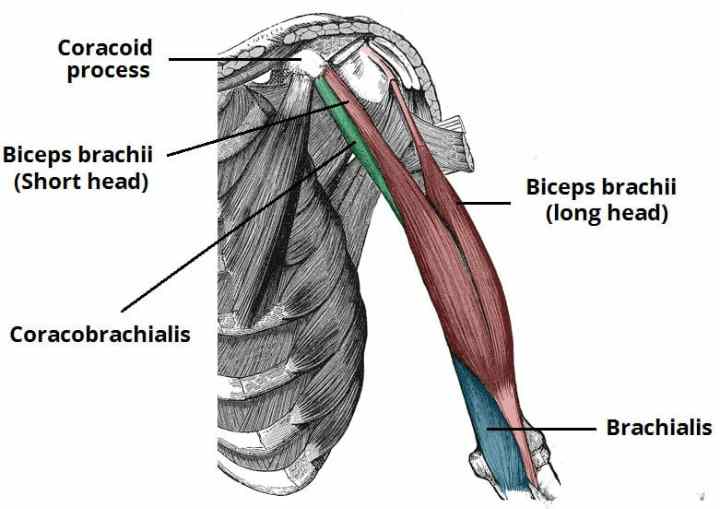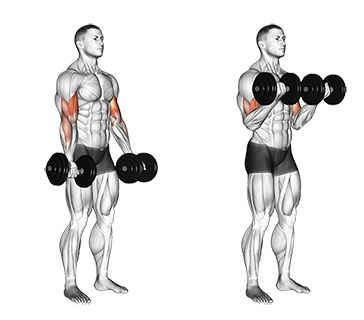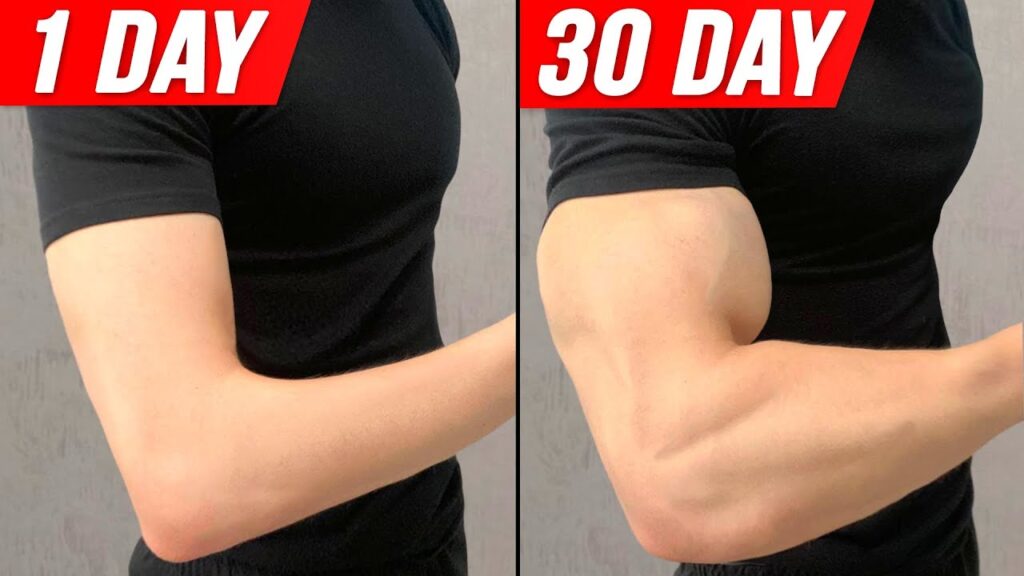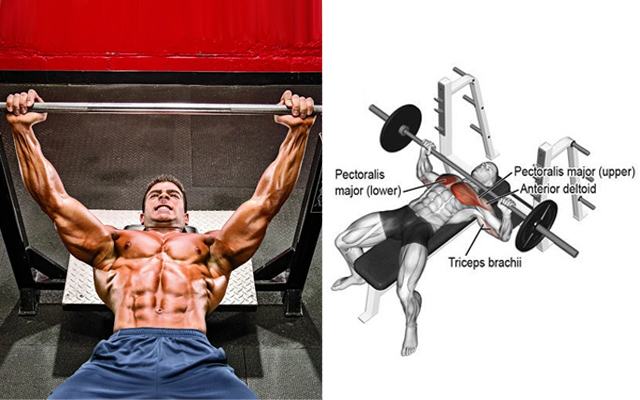Have you ever found yourself wondering, “Is there a secret to getting those perfectly sculpted arms?”
Let me share a quick story. A few months ago, I started working out at a new gym. On my first day, I met Jake and Mike. Jake was a bicep curl enthusiast, always boasting about his “killer biceps” and how they were the key to impressing everyone at the beach. Mike, however, swore by hammer curls and often joked that Jake was missing out on “the real gains.”
One day, our trainer decided to put their routines to the test with a simple yet challenging task: carry the heaviest dumbbells across the gym without dropping them. Jake, with his bulging biceps, confidently took the first turn. But halfway through, his arms began to tremble like a chihuahua in a snowstorm, and he barely made it to the end. Mike, on the other hand, with his solid grip from hammer curls, managed to finish the task with ease, a victorious grin plastered on his face.
So, what’s the deal here? Is one exercise truly better than the other? Is there a hidden advantage to hammer curls that Jake missed out on, or is it just a matter of preference? Let’s dive into the details and find out which exercise might be the game-changer for your arm workouts. Whether you’re aiming to lift heavier, look better, or just finally open that stubborn jar of pickles, the answer might just surprise you.
Anatomy of the Biceps

The biceps brachii, commonly known as the biceps, is a large muscle located on the front of the upper arm between the shoulder and the elbow. It’s one of the most visible muscles in the body and plays a key role in upper body movement. The term “biceps” is Latin for “two heads,” which refers to the fact that the muscle is made up of two bundles, each with its own origin but sharing a common insertion point. These two bundles are known as the “long head” and the “short head” of the biceps.
The long head of the biceps originates from the supraglenoid tubercle of the scapula, or shoulder blade. It runs within the bicipital groove of the humerus, which is the upper arm bone, and is held in place by the transverse humeral ligament. On the other hand, the short head of the biceps originates from the coracoid process, a small hook-like structure on the lateral edge of the superior aspect of the scapula.
SHOP FOR THE ADJUSTABLE DUMBBELL SET ON AMAZON
These two heads of the biceps converge into a single muscle belly, which is attached to the upper forearm at the radial tuberosity on the radius bone. This is their common insertion point. The primary function of the biceps brachii is to act as a flexor of the elbow and a supinator of the forearm. In other words, it helps to bend the elbow and rotate the forearm so the palm faces upwards.
Other important structures associated with the biceps include the biceps tendon, which connects the biceps muscle to the bones, and two bursae, or fluid-filled sacs, located near the biceps tendon that help reduce friction between the bones and the tendon. Understanding the structure of the biceps can help you better understand how different exercises target different parts of the muscle.
Hammer Curls vs Bicep Curls: What’s the Difference?
Here are the main differences between Hammer Curls and Bicep Curls:
1. Grip: The grip is one of the most noticeable differences between these two exercises. Hammer curls are performed with a neutral grip, meaning your palms face each other. On the other hand, bicep curls are performed with a supinated grip, where your palms face upwards.
2. Muscles Worked: Due to the different grips, these exercises target slightly different muscles. Hammer curls work your forearms and the outer biceps muscles (long head), while bicep curls isolate your inner biceps muscles (short head) more effectively.
3. Appearance: Since hammer curls require more extensive engagement from your forearms, they can give your overall arms a thicker appearance. Bicep curls, on the other hand, dramatically emphasize your biceps for that rounded look when you flex.
4. Tension: The neutral grip of the hammer curl allows more of a “rest” at the bottom of each rep. Conversely, the palms-up position of a biceps curl puts more tension on the biceps at the bottom of each rep.
5. Weight: Many lifters can lift heavier weights with hammer curls than bicep curls due to the involvement of a larger amount of muscle mass and the neutral grip.
SHOP FOR THE RESISTANCE BAND ON AMAZON
Remember, both exercises can be beneficial for arm development, and the “better” exercise ultimately depends on your personal fitness goals and preferences. For instance, if you’re aiming to increase the size of your biceps, bicep curls might be more effective. But if you want to improve forearm strength or arm thickness, hammer curls could be a better choice.
Hammer Curls vs Bicep Curls: Benefits & Drawbacks
Here are the benefits and potential drawbacks of both Hammer Curls and Bicep Curls:
Hammer Curls: Benefits & Drawbacks
Hammer Curls are a great exercise for adding mass to your arms, as the grip positioning often allows you to lift heavier weights. They also allow more focus on the short head of the biceps and can be easier to tolerate than traditional curls if you’re experiencing shoulder or forearm pain. Additionally, hammer curls are excellent for boosting grip strength because the neutral hand grip activates your wrist flexors more than pronated and supinated curls.
Toning and Cellulite Reduction
However, hammer curls do have some potential drawbacks. A significant disadvantage is the exercise’s lesser emphasis on the biceps brachii. Also, it’s best to perform hammer curls with a lightweight first. If you experience any pain, then it may be better to hold off and consult a medical professional.
Bicep Curls: Benefits & Drawbacks
On the other hand, Bicep Curls can help you build strength in the upper arm and learn to use your arm muscles correctly, bracing with your core muscles. Regularly performing bicep curls can improve your posture and prevent elbow problems such as tendonitis and jumper’s knee. Bicep curls can also increase your metabolism, which is the rate at which calories are burned.
However, bicep curls also have some potential drawbacks. They may place more strain on your wrist and will likely not increase grip strength as much as hammer curls, so there’s less carry-over to other lifts. It’s also easy to use momentum when performing bicep curls, which may lead to pain in the front of your shoulder (also known as biceps tendinitis).
SHOP FOR THE ADJUSTABLE WEIGHT BENCH ON AMAZON
Remember, both exercises can benefit arm development, and the “better” exercise ultimately depends on your personal fitness goals and preferences.
Bicep Curls vs Hammer Curls: How to Perform Each Exercise
Maintaining proper form is crucial for both Hammer Curls and Bicep Curls to ensure effectiveness and minimize the risk of injury. Here’s a detailed guide for each:
Bicep Curls

- Stand with feet shoulder-width apart, holding a dumbbell in each hand.
- Keep your arms fully extended at your sides with palms facing forward.
- Engage your core and keep your back straight throughout the movement.
- Slowly curl the dumbbells upward by bending your elbows, keeping your upper arms stationary.
- Continue lifting until the dumbbells are at shoulder level and your biceps are fully contracted.
- Pause for a moment, then slowly lower the dumbbells back to the starting position with control.
- Repeat for the desired number of repetitions.
Common Mistakes:
- Avoid swinging the weights or using momentum.
- Ensure your elbows stay close to your torso and do not flare out.
- Don’t arch your back; keep your core engaged for stability.
Hammer Curls

- Stand with feet shoulder-width apart, holding a dumbbell in each hand.
- Keep your arms fully extended at your sides with palms facing your torso (neutral grip).
- Engage your core and keep your back straight throughout the movement.
- Slowly curl the dumbbells upward by bending your elbows, keeping your upper arms stationary and maintaining a neutral grip.
- Continue lifting until the dumbbells are at shoulder level and your forearms are fully contracted.
- Pause for a moment, then slowly lower the dumbbells back to the starting position with control.
- Repeat for the desired number of repetitions.
Common Mistakes:
- Avoid using your back or shoulders to lift the weights.
- Ensure your wrists stay in a neutral position and do not bend or twist.
- Keep your elbows close to your body to maintain proper form.
Best Resistance Band Bicep Exercises
Remember, the key to both exercises is to move only your forearms and keep the rest of your body still to maximize bicep engagement. Avoid swinging the weights or using momentum to lift them.
Bicep Curls vs Hammer Curls: Which is Best for Working the Biceps?
When considering which exercise is best for working the biceps, both hammer curls and traditional bicep curls have distinct advantages depending on specific fitness goals and preferences.
Bicep curls primarily target the biceps brachii muscle, emphasizing its development through a focused range of motion that isolates the muscle group. This exercise is particularly effective for those aiming to build size and definition in the biceps.
On the other hand, hammer curls engage not only the biceps brachii but also the brachialis and brachioradialis muscles more comprehensively. This broader engagement contributes to overall arm strength and can aid in achieving balanced muscle development across the forearm and upper arm.
Hammer curls also offer functional benefits, enhancing grip strength and stability due to their neutral grip position, which mimics natural arm movements in daily activities and sports.
Best Leg Exercise: Hack Squat or Leg Press?
Therefore, while traditional bicep curls excel in targeting the biceps specifically for size and shape, hammer curls provide a well-rounded approach to arm strength and functional fitness. Ultimately, the choice between the two exercises should align with individual fitness objectives and preferences for muscle engagement and overall strength development.
Incorporating Both Exercises into a Workout Routine
Incorporating both Hammer Curls and Bicep Curls into your workout routine can lead to balanced arm development. Here’s how you can do it:
- Sets and Reps: Aim for 3-4 sets of 8-12 repetitions for both exercises. This range is often recommended for muscle growth and strength.
- Frequency: Include these exercises in your bicep workout 1-2 times per week. This allows your muscles to rest and recover between workouts, which is crucial for growth and strength gains.
- Progression: Gradually increase the weight or resistance as you get stronger. This is known as progressive overload, and it’s key to continuous improvement and avoiding plateaus.
- Variety: Try different variations of both exercises to target different parts of your biceps and forearms. For example, you can do seated or standing hammer curls, or try cross-body hammer curls. For bicep curls, you can try incline dumbbell curls or concentration curls.
- Order of Exercises: You can alternate between the two exercises in your workout or do both in the same workout. For example, you could start with bicep curls when your biceps are fresh and then move on to hammer curls.
- Form and Technique: Always maintain proper form and technique to prevent injury and ensure you’re effectively targeting the intended muscles.
Targeting Both Heads of the Bicep
Remember, everyone’s body responds differently to exercise, so it’s important to listen to your body and adjust your routine as needed.
FAQs
Q 1. Can beginners start with Hammer Curls and Bicep Curls, or should they have some level of fitness before attempting these exercises?
Ans. Yes, beginners can start with these exercises using light weights. It’s important to learn the correct form and gradually increase the weight as strength improves.
Q 2. How can I modify Hammer Curls and Bicep Curls if they are too challenging or if I have an injury?
Ans. You can use lighter weights or perform the exercises with resistance bands. If you have an injury, it’s important to consult with a healthcare professional before attempting these exercises.
Q 3. What other exercises complement Hammer Curls and Bicep Curls for a well-rounded arm workout?
Ans. Other exercises that target the arms include tricep dips, push-ups, pull-ups, and overhead presses. Incorporating a variety of exercises can help ensure balanced arm development.
Q 4. How long does it take to see results from doing Hammer Curls and Bicep Curls?
Ans. This can vary depending on factors like your starting fitness level, how often you exercise, and your diet. However, with consistent training, you might start to see improvements in strength and muscle definition within a few weeks.
Q 5. What are some signs that I might be overworking my biceps?
Ans. Signs of overworking can include persistent muscle soreness, decreased strength or performance, increased risk of injury, and feeling fatigued or drained.
Q 6. Can Hammer Curls and Bicep Curls help improve sports performance?
Ans. Yes, these exercises can improve arm strength and endurance, which can be beneficial in sports that involve throwing, lifting, or swinging movements.
Q 7. What is the impact of diet on the effectiveness of Hammer Curls and Bicep Curls?
Ans. Diet plays a crucial role in muscle growth and recovery. Consuming a balanced diet with adequate protein can help support muscle growth and repair.
Q 8. Are there any specific stretches or warm-up exercises recommended before performing Hammer Curls and Bicep Curls?
Ans. Yes, it’s important to warm up before any strength training exercise. This could include light cardio, such as jogging or jumping jacks, followed by dynamic stretches that target the arms, such as arm circles or swings.
Conclusion
In conclusion, both Hammer Curls and Bicep Curls are effective exercises for developing arm strength and size. While they target slightly different areas of the arm, incorporating both into your workout routine can lead to balanced arm development. Hammer Curls focus more on the brachialis and brachioradialis, contributing to a thicker arm appearance, while Bicep Curls emphasize the biceps brachii for a more rounded look when flexed.
However, it’s important to remember that the “better” exercise ultimately depends on your personal fitness goals and preferences. Always maintain proper form and technique to prevent injury and ensure you’re effectively targeting the intended muscles. Gradually increase the weight or resistance as you get stronger, and try different variations of both exercises to keep your workouts interesting and challenging.

Good day, and welcome to Fitthour. My name is Shubham Vijay, and I am a certified personal trainer and nutrition coach with 6 years of experience in the fitness industry. At Fitthour, we specialize in types of training, such as strength training, cardio, or HIIT, and our mission is to help clients achieve their fitness goals and improve their overall health.



